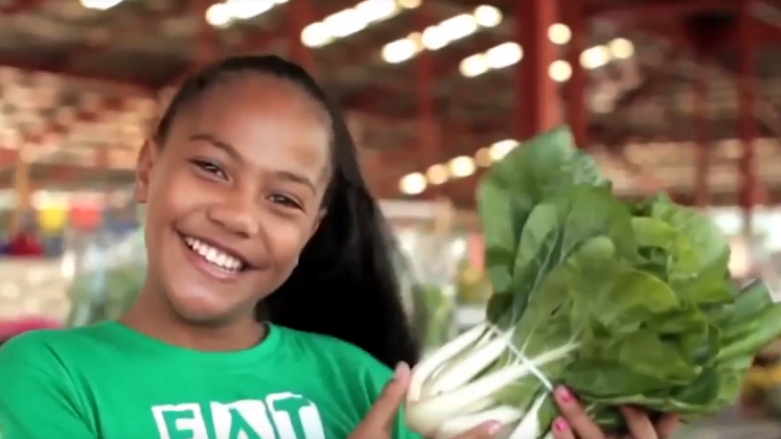Supporting Samoan farmers’ efforts to improve local produce
The initiative is the result of a partnership between Samoa’s Ministry of Health and Ministry of Agriculture & Fisheries which was fostered by the World Bank supported Samoan Agricultural Competitiveness Enhancement Program (SACEP).
SACEP works with local farmers to increase the amount and quality of local produce – aiming to increase the amount of locally grown healthy food getting from farms to plates throughout the country. This is being done through:
· The promotion of higher yielding varieties
· Encouraging the adoption of enhanced technology and production techniques,
· Supporting productivity enhancing on-farm investments,
· And strengthening market presence to meet the demands of local for year-round supplies of fresh fruits and vegetables.
Lafaele Enoka, SACEP Coordinator from the Samoan Ministry of Agriculture and Fisheries says the project is about eating well, but also about strengthening the local market; so people eat local, and buy local.
“The primary focus of SACEP is to improve the productivity of local farmers, and take advantage of the local market situation,” he says.
The Ministry of Health’s work is a key aspect of this to ensure that children develop healthy eating habits that they take on to later life.
In addition to health benefits, healthy children are able to study harder, healthier diets will lead to a lower incidence of non-communicable diseases, easing pressure on the health system, and increased local production cuts down the amount of imported food, strengthening the Samoan economy. Considering that two out of every three Samoans work in the agricultural sector, this boost to the sector is an important part of Samoa’s continued growth.
Says Sharon Suhren, whose school has embraced the Eat a Rainbow initiative: “That’s what we’re trying to encourage to the students and their parents, making sure they have some of this in their diet each day. And when we have this we don’t even have to buy the stuff that’s imported from other countries.”


